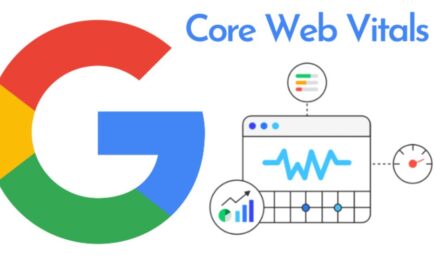To ensure your site is optimized effectively for success, it’s crucial to comprehend how modern search engines function. These engines play a significant role in our daily lives, aiding us in finding information across various domains, including articles, news, recipes, videos, and images. But what exactly are search engines, and how do they operate in information retrieval?
Given the vast web pages available, search engines evaluate billions to deliver the most relevant information for each search query. The challenge lies in organizing and presenting this information to meet the needs of the search user. Notably, Google and other search engines prioritize enhancing the user experience, striving to provide optimal results for every query. The process is straightforward for users: they input their query, and the search engine scans its index of web pages to identify the best matches. These matches are then ranked by an algorithm and showcased on the results pages or SERPs.
For marketers, search engines are essential for attracting attention to their content or products. The key to optimizing your site for success lies in understanding this process. So, in this guide, we will give you a fundamental understanding of how search engines operate.
What Is A Search Engine?
Search engines play a crucial role in our daily routines, and one of the most well-known examples is “Google.” A search engine is a software system designed to assist users in finding specific content on the Internet using targeted keywords. These systems conduct thorough scans of the WWW or World Wide Web to locate relevant information based on the user’s provided web search query. The retrieved data may include links to online websites, images, videos, infographics, news articles, and scholarly publications.

Typically, the information you’re seeking is presented in a series of responses or results arranged in what’s known as Search Engine Results Pages (SERPs). Many search engines also monitor databases and open directories to gather information. To maintain real-time data, these engines employ web crawlers that creep through the Internet, download content, and index it. This process enhances users’ ability to search more effectively. Besides Google, other examples of search engines include Bing, Yahoo, Yandex, and DuckDuckGo, among others.
An Overview Of How A Search Engine Works?
Search engines function through web crawlers, specialized programs that go through publicly available pages on the internet. These crawlers continually explore the web, identifying new pages and updates to existing ones, and then add this information to a comprehensive search index.

This process is intricately divided into three key stages:
- Discovery: Uncovering relevant information.
- Organization: Structuring and categorizing the acquired information.
- Ranking: Determining which pages should appear in search results for a given query and the order in which they are presented.
These stages are collectively called first crawling, indexing, and then ranking. Let’s understand each of the key aspects.
1. Crawling
The technique employed by search engine web crawlers, commonly known as bots or spiders, is called crawling. This process involves visiting a webpage, downloading its content, and extracting links to uncover additional pages. A crucial aspect of crawling is the identification of links.
Each webpage possesses a unique identifier, known as a URL. Typing a URL into your browser’s address bar directs you to the corresponding webpage. Webpages are constructed with content marked up in HTML, a machine-readable language. Crawlers can visit a URL, extract the HTML, and interpret the content in a structured manner. Importantly, crawlers can distinguish between hyperlinks and text.
While examining the HTML code for a page, such as the one containing this article, crawlers identify each paragraph through a code element called the paragraph element or p-tag. The p-tag at the beginning opens the paragraph element, while the one at the end closes it. Although this code isn’t visible unless you inspect the page, crawlers comprehend it, recognizing that the page contains text content intended for human readers.
The crawler parses the HTML for every webpage encountered, breaking it into components for further processing. It extracts all discovered links and schedules them for crawling. This creates a feedback loop:
- Crawl URL
- Find links to URLs
- Schedule URLs for crawling
- Crawl URL
A crawler can start with a single URL as a source and continue until it exhausts the discovery of new URLs, potentially numbering in the thousands or millions. In essence, crawling serves as a method of discovery. Search engines employ web crawlers to find web pages, utilizing links as guideposts for exploration. The significance of internal links on a website becomes evident, allowing search engine crawlers to unveil all pages within the site.
Pages already ranking in the search engine are periodically crawled to assess if any alterations have occurred since the last crawl. If changes are detected, the search engine updates its index in response to these modifications.
But why is it important?
When optimizing your website for search engines, a crucial initial step is ensuring that they can efficiently access it. If search engines need help to “read” your website, achieving high rankings or attracting substantial search engine traffic becomes unlikely.
Given the workload of crawlers, your goal is to simplify their task. To enhance the discoverability and accessibility of your website, consider the following measures:
- Utilize Robots.txt: Employ Robots.txt to specify which pages of your website should be off-limits to crawlers. This is particularly relevant for sensitive areas like admin or backend pages, ensuring they remain private and are not publicly accessible online.
- Utilize Webmaster Tools: Major search engines such as Google and Bing provide tools, often called Webmaster tools, allowing you to furnish them with additional information about your website. This includes details like the number of pages and the structure of your site, streamlining the process for search engines, and minimizing the need for them to discover this information independently.
- Implement XML Sitemap: Create an XML sitemap that comprehensively lists all crucial pages on your website. This proactive measure assists crawlers in identifying the pages to monitor for any updates or changes, promoting efficient indexing.
- Deploy the Noindex Tag: Employ the “noindex” tag strategically to instruct search engine crawlers not to index specific pages. This can benefit pages not intended for public viewing or should not appear in search engine results.
2. Indexing
Search engine indexing is the systematic process employed by search engines, such as Google, to organize and store online content within a central database known as its index. This indexed information is then analyzed, allowing the search engine to comprehend and present the content to users in prioritized lists on its SERPs.
The indexing process involves meticulously examining a webpage, followed by storing and cataloging relevant information. It’s important to note that not all information encountered during the crawling process is deemed relevant for indexing. The mere crawling of a page does not guarantee its inclusion in the index.
The search index is an extensive repository characterized by its colossal size and scale. While search engines do not store every detail from a webpage in their index, they focus on key elements such as the page’s update or creation timestamp, description and title, associated keywords, content type, and outgoing and incoming links. These parameters are crucial for the algorithms driving the search engine.
To illustrate, Google often likens its index to the back of a book—an expansive compendium containing essential details to facilitate efficient retrieval and presentation of search results.
But why is it useful?
The utility of an index lies in its ability to facilitate swift and efficient searches. For search engines like Google, the expeditious retrieval of information and the delivery of search results hinge on the effectiveness of indexing. During the crawling process, search engines meticulously parse the HTML documents of web pages, extracting essential elements such as links and text content.
To build an inverted index, search engines correlate each web page’s URL with the words on the page, storing the destination URL and anchor text for each link. Simultaneously, they catalog word occurrences from the text content. This parsed data is then used to generate the inverted index, where each word is associated with the web page URLs.
Once a URL is indexed, it becomes a potential candidate for inclusion in search results. For every indexed URL, search engines retain appropriate word-URL relationships and additional metadata collected about the page. This stored data plays a crucial role in the search engine’s determination of which URLs to display in their search results.
Guiding search engine indexing for your site
- Robots Meta Directives: Meta directives, commonly known as “meta tags,” provide instructions to search engines on how to treat your web page. These directives enable you to communicate preferences to search engine crawlers, such as indexing a page in search results or withholding link contents from on-page links.
- XRobots Tag: The XRobots Tag is an optional element in a URL’s HTTP response header, offering users control over how search engine spiders crawl and index their web pages. This tag governs indexing for the entire page and its specific elements. Through the XRobots Tag, users can utilize regular expressions, prevent the crawling of non-HTML files, and globally apply no index tags across the site.
- Index/Noindex: The index/noindex directive informs search engines about a page’s crawling and indexing status. Choosing “noindex” signals to crawlers that the page should be excluded from search results. Typically, search engines assume pages are indexable, making the “index” value unnecessary.
- Follow/Nofollow: The follow/nofollow directive guides search engines on whether to follow links on a page. Opting for “follow” requests is like saying to the bots to go through the links and pass link assets to the linked URLs. Alternatively, selecting “nofollow” does the opposite by instructing the search engines not to follow or pass the link or its contents through the links on the page. All pages are assumed to have the “follow” attribute by default.
- Noarchive: The noarchive directive prevents search engines from storing a cached page copy. By default, search engines retain visible copies of all indexed pages, accessible to users through the cached link in the search results.
How can you determine the number of indexed pages in Google?
There are two methods to ascertain the count of pages from your website included in the Google index.
- Using Google Search: Open Google and employ the “site” operator followed by your domain name. For instance, type site:example.com in the search bar (replace “example” with your actual domain). This search query will reveal the number of pages associated with the specified domain currently indexed by Google.
- Google Search Console: Another approach is to create a free account on Google Search Console and add your website to it. Once added, go to the “Indexed Pages” report under the “Pages” section, specifically within the “Indexing” category. This report will provide detailed information about the number of pages from your website that Google indexes.
3. Ranking
The process that ensures relevant results appear when users enter queries in the search bar is called ranking. It involves arranging search results from most relevant to least relevant for a specific query. The delivery of search results hinges on users’ search queries. For instance, if someone searches for “best digital marketing service,” the search engine matches each word with documents and relevant sites in its index.
However, a mere word-to-page matching results in many documents and websites. Search engines must determine how to display the best matches to address this. This complexity underscores the importance of SEO.
To understand the relevance of the content, search engines rely on algorithms—formulas or processes that retrieve and order stored information meaningfully. Over the years, these algorithms have undergone numerous changes to enhance search result quality. Google, for instance, adjusts its algorithms daily, making minor quality tweaks and core/broad updates to address specific issues.
Algorithms are sets of rules that guide computer programs in performing specific processes. A ranking algorithm comprises numerous algorithms and processes working together.
The ranking algorithm examines factors such as:
- Presence of all search query keywords on the page.
- Occurrence of specific keyword combinations on the page.
- Appearance of keywords in the page title.
- Inclusion of keywords in the page URL.
These are basic examples, and the ranking algorithm considers hundreds of other factors, known as ranking factors when deciding which results to display. Google’s global dominance in the search engine can be attributed to the superiority of its ranking algorithm over its competitors.
Conclusion
Understanding the inner workings of search engines is pivotal for anyone looking to rank in the SEPR. The seamless interaction between crawling, indexing, and ranking processes forms the backbone of how these engines deliver user information. As users, we input queries, and search engines tirelessly explore the vast web, organizing relevant data into an extensive index. The ranking algorithm then steps in to present results tailored to our queries.
For marketers, optimizing websites involves facilitating this intricate process—ensuring efficient crawling, strategic indexing, and aligning content with ranking factors. In this ever-evolving realm, staying abreast of these fundamental aspects is paramount for online visibility and success.
Frequently Asked Questions
Q: What defines a search engine and how does it operate?
A search engine is an online tool that helps users in locating information across the World Wide Web. Notable examples of search engines include Google, Bing, and Yahoo.
Q: What is the essence of SEO in a search engine?
Search engine optimization (SEO) is the strategic practice of aligning your website to achieve a higher ranking on a search engine results page (SERP), consequently attracting increased web traffic.
Q: What is the difference between a browser and a search engine?
A browser serves as software designed to fetch and display web pages, while a search engine functions as a website aiding users in discovering web pages from various sources. Initial confusion may arise as, upon launching a browser for the first time, it often displays the homepage of a search engine.
Q: What is PPC in search engines?
PPC, or pay-per-click, is a form of online marketing where advertisers pay each time a user clicks on one of their advertisements.












